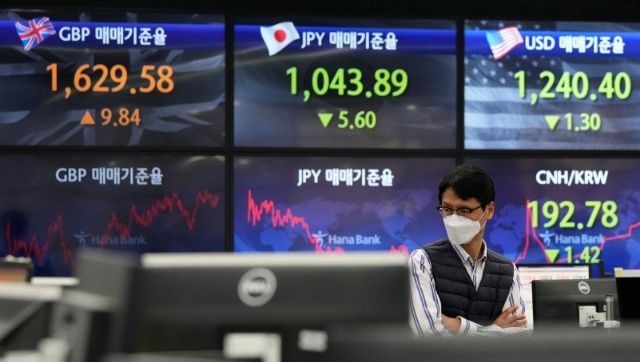Beijing: Asian stocks followed Wall Street lower Friday as fears spread that US interest rate hikes to fight inflation might stall economic growth. Shanghai, Hong Kong, Seoul and Sydney declined. Tokyo edged higher as trading resumed after a holiday. Wall Street’s benchmark S&P 500 index plunged 3.6 per cent on 5 May, 2022, for its biggest one-day loss in two years as optimism that drove the previous day’s rally evaporated. Investors worry about whether the Federal Reserve, which raised its key interest rate by a half percentage point on 4 May, 2022, can cool inflation without tipping the slowing US economy into recession. Traders were temporarily encouraged by chairman Jerome Powell’s comment that the Fed wasn’t considering even bigger increases. “Clearly, investors had second thoughts about the so-called ‘dovish hike’ from the Fed,” Rob Carnell of ING said in a report. The likelihood is “rate hikes coming thick and fast, but little if any prospect of a turn in inflation any time soon.” The Shanghai Composite Index fell 1.6 per cent to 3,019.11 and Hong Kong’s Hang Seng plunged 3.6 per cent to 20,051.61. The Nikkei 225 in Tokyo added 0.9 per cent to 27,053.81. The Kospi in Seoul tumbled 1.3 per cent to 2,642.26 and Sydney’s S&P-ASX 200 lurched down 2.3 per cent to 7,197.40. New Zealand and Singapore also declined. Russia’s war on Ukraine, high oil prices and global supply chain disruptions are adding to investor unease. Also on 5 May, the Bank of England raised its benchmark rate to the highest level in 13 years, its fourth hike since December to cool British inflation that is running at 30-year highs. The S&P 500 fell 3.6 per cent to 4,146.87, giving back Wednesday’s 3 per cent increase. The Dow Jones Industrial Average lost 3.1 per cent to 32,997.97. The Nasdaq, dominated by tech stocks, slumped 5 per cent to 12,317.69. The US government was due to report employment numbers on 5 May, a closely watched data point. Economists at BNP Paribas still expect the Fed to keep hiking the federal funds rate until it reaches a range of 3 per cent to 3.25 per cent, up from zero to 0.25 per cent earlier this year. Energy markets remain volatile as the conflict in Ukraine continues and demand remains high amid tight supplies of oil. European governments are trying to replace energy supplies from Russia and are considering an embargo. OPEC and allied oil-producing countries decided Thursday to gradually increase the flows of crude they send to the world. Benchmark US crude gained 77 cents to $109.03 in electronic trading on the New York Mercantile Exchange. The contract rose 45 cents to $108.26 on 5 May. Brent crude, the price basis for international oil trading, advanced 75 cents to $111.65 per barrel in London. The dollar rose to 130.47 yen from Thursday’s 130.40 yen. The euro gained to $1.0539 from $1.0519. Read all the Latest News , Trending News , Cricket News , Bollywood News , India News and Entertainment News here. Follow us on Facebook , Twitter and Instagram .
Asian stocks follow Wall Street down as interest rate hike worries grow
The Associated Press
• May 6, 2022, 10:46:42 IST
Energy markets remain volatile as the conflict in Ukraine continues and demand remains high amid tight supplies of oil
Advertisement
)
End of Article